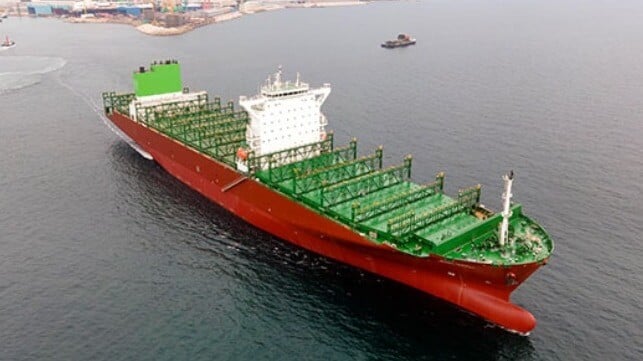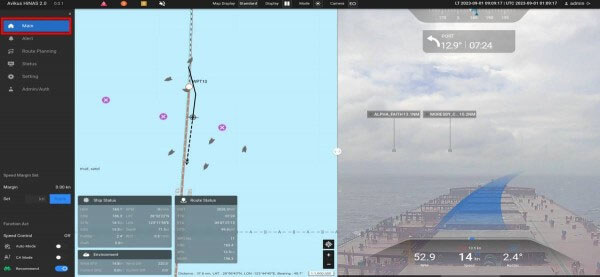HD Hyundai Begins Autonomous Demonstration with Larger Containership

South Korean shipbuilder HD Hyundai Heavy Industries today started a demonstration of autonomous operations of a large containership with the systems specifically designed into the vessel. It is part of a government-sponsored program being overseen by Korea’s Ministry of Trade, Industry and Energy, and the Ministry of Oceans and Fisheries, designed to advance and commercialize autonomous shipping.
The 8,000 TEU containership was built at the Ulsan yard with HD Hyundai’s autonomous navigation system. The ministries selected the project as part of a series of 44 programs that were given a special exemption from current regulations. According to the shipbuilder, this permits them to proceed with the demonstrations which will lead to the development of international standards for autonomous shipping.
During the tests, which began on Monday, November 4, they will demonstrate autonomous collision avoidance operating in the waters off Ulsan, South Korea. The ship will also be remotely controlled for the speed and direction during the demonstration which operations from the HD Hyundai GRC located in Seongnam, Gyeonggi Province.
The company highlights that it is difficult to test ships for autonomous navigation systems because there currently is no legal basis for land-based mariners to control ships under remote control. The “regulatory sandbox” program launched by the South Korean ministries is letting companies work around the current regulations for demonstrations and gather data to advance the development of the technology.

Sample collision avoidance screen (POS Ocean Ship Management)
This is the latest in a series of tests in cooperation with South Korean shipping company POS Ocean and PAN Shipping along with HD Hyundai’s Avikus division which was set up for the commercialization of autonomous technologies. The group has already demonstrated systems on smaller boats and is launching products for recreational boating while expanding its efforts to large commercial ships.
In April 2024, POS Singapore (22,800 dwt), which was ordered in 2022 and built by Hyundai Mipo Dockyard in Ulsan, was launched as the first containership with the autonomous technology integrated into a newbuild. The vessel, which measures 576 feet (172 meters) in length and is registered in Liberia with a capacity of 1,800 TEU, completed the installation of the systems in September to begin testing.
Last month, the same partnership launched tests with the Sea Shanghai, a 324,272 dwt ore carrier built in 2020 and managed by POS Ocean. Pan Ocean reported they jointly conducted test operations for the stable application of the autonomous navigation system and successfully conducted various tests during the sea trial period, including route planning, route tracking, speed tracking, collision avoidance, and safety function inspection of the product.

that matters most
Get the latest maritime news delivered to your inbox daily.
The autonomous navigation system is designed to operate the optimal route and avoid collisions by analyzing information collected from various navigation equipment and sensors using Artificial Intelligence (AI) and Augmented Reality (AR). According to the companies, it was developed to assist navigation, such as reducing navigation fatigue for deck officers, and is expected to contribute to carbon reduction through safe operation and improved fuel efficiency.
Based on the data accumulated through the offshore demonstrations, Hyundai Heavy Industries says it plans to lead the international standards for autonomous ships.
